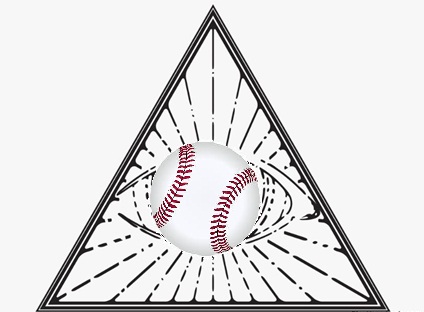2017 Team WAR Projections and Playoff WAR Targets
Now that the World Series is over and the offseason upon us, our view of baseball begins to shift. For the last six months we have been laser-focused on the outcomes on the field. Now we begin to focus on the process of team-building and the chase to taste October Glory.
This exercise is an attempt to figure out how close teams may be and what they need to add in in the offseason to reach the playoffs. To do this, I looked at the latest FanGraphs depth charts, and the WAR landscape looks something like this:
Team 2017 Projected WAR
Cubs 50.1
Dodgers 48.7
Nationals 45.3
Indians 43.2
Red Sox 42.5
Giants 41.1
Astros 40.2
Cardinals 39.1
Angels 38.3
Mets 37.5
Mariners 37.2
Yankees 36.9
Pirates 36.6
Tigers 34.2
Rays 33.8
Rangers 33.5
Blue Jays 32.5
Marlins 32
Orioles 31.9
White Sox 31.1
Royals 30.7
Athletics 30.7
Diamondbacks 30.3
Rockies 27.7
Twins 27.7
Reds 26.5
Phillies 26.1
Padres 23
Braves 22.9
Brewers 21.6
To the surprise of no one, the Cubs lead in projected WAR due to the excellent core in place, with the Dodgers and Nationals taking second and third, respectively. The Indians and Red Sox rank fourth and fifth on this list and represent the top of the American League.
Now, to get a feel for what it is likely going to take to make the playoffs in 2017, I approximated how much team WAR will be needed to make the 2017 playoffs by averaging the WARs of playoff qualifiers going back to 2012 and came up with this:
AL WAR Target: 42.0
NL WAR Target: 44.6
American League teams, when assessing whether they are a realistic playoff contender, should project for a team WAR of 42, and National League teams thinking the same should project for closer to 45. Next, I took the projected WAR from each team and subtracted it from the respective league’s WAR target to determine how close teams may or may not be:
Team Target WAR +/-
Cubs 5.5
Dodgers 4.1
Indians 1.2
Nationals 0.7
Red Sox 0.5
Astros -1.8
Giants -3.5
Angels -3.7
Mariners -4.8
Yankees -5.1
Cardinals -5.5
Mets -7.1
Tigers -7.8
Pirates -8.0
Rays -8.2
Rangers -8.5
Blue Jays -9.5
Orioles -10.1
White Sox -10.9
Royals -11.3
Athletics -11.3
Marlins -12.6
Diamondbacks -14.3
Twins -14.3
Rockies -16.9
Reds -18.1
Phillies -18.5
Padres -21.6
Braves -21.7
Brewers -23.0
We see that only five teams exceed the arbitrary threshold of projecting above an average playoff contender. For a team like the Astros and Giants the decision to go for it is obvious. The Giants and Astros have payroll available and solid player development. Interestingly enough, the Angels are closer than one might initially think, but that has more to do with Mike Trout than the cast around him.
Moving toward the middle of the graph is where things begin to get intriguing. With the cost of 1 WAR on the open market approximately $8 million and the trade market expected to be active and expensive, teams need to be realistic with how much they are willing to spend, in cash or prospects, in order to reach the projected WAR threshold. Fringe contenders like the Pirates, Blue Jays and White Sox need to look in the mirror and recognize the uphill battle they have. The Blue Jays are losing key pieces to free agency and they could potentially cripple their flexibility with ill-advised moves. The Pirates are staring up at the Cubs dynasty in the making and you wonder if it is time to shop Andrew McCutchen and other short-term pieces. Lastly, the White Sox have Chris Sale, Jose Quintana, Todd Frazier and other quality pieces around the diamond. Given the AL Central, the Sox could blow it up and return to contention sooner rather than later, with the Royals and Tigers’ windows closing and the Indians representing the class of the division.
As we know, it rarely plays out this cleanly on the field, but from a pure projections standpoint, this serves as a gauge to where teams currently are. Some teams have very easy decisions and the choice to contend or rebuild is obvious. For other teams, the decision is less clear, and failure to capitalize could leave them stirring in mediocrity. The Cubs and Indians will fortify their rosters to chase down another pennant. For teams like the Pirates and White Sox, it just might be time to hit the red button.
